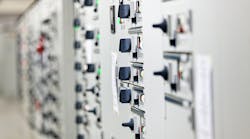7 Common Mistakes with Cabinet Cooling Systems
When engineers assemble or choose cooling systems for the enclosures and cabinets that will house the equipment they design, they must ensure the cooling hardware is sized properly for the heat load of the equipment inside and the environments where the enclosures will be located. Unfortunately, this does not always happen, especially when the equipment inside is upgraded or replaced by engineers with limited experience in cooling systems. Here are seven of the most common mistakes we encounter with companies when they are sizing and choosing cooling cabinets for their hardware.
Mistake #1: Oversized Air Conditioners
When you have enclosures that overheat, the most logical solution is to go bigger with the air conditioning to overcome the overheating problems once and for all. This approach usually works, but it is not the most efficient approach. Oversized cabinet air conditioners bring temperatures down too quickly, which means either the duty cycle will be too low for effective humidity control or the compressor will cycle frequently and make temperatures inside the enclosure swing excessively.
Mistake #2: Fitting Air Conditioners in Ventilated Enclosures
When cabinet ventilation cannot maintain an enclosure’s interior temperature at a reasonable level, the best solution is to install an enclosure air conditioner. However, it is essential that the cabinet’s ventilation openings are sealed or hot air will get inside the enclosure. This incoming air will force the air conditioning compressor to run for long periods of time, causing rapid wear, and, in hot weather, it’s unlikely the temperature inside the enclosure will really be properly controlled.
Mistake #3: Leaving Enclosure Doors Open
It is not unusual for doors on electrical enclosures to be left open, especially when the enclosures are inside the plant and fitted with barriers that prevent access to live sections. However, this exposes equipment to dust, debris, humidity, and poorly controlled temperatures. It also wastes electricity if the air conditioning is left on. So if there is an air conditioner, it should be turned off or a door-interlock switch added to turn it off when the doors are open as this will prevent the compressor from running continuously.
An enclosure’s rating from the National Electrical Manufacturers’ Association (NEMA) describes the enclosure’s level of protection against rain, dirt, and dust. This means the air conditioner in an enclosure must conform to NEMA ratings or else the enclosure’s rating will be invalidated. This is particularly important for outdoor enclosures and those installed in harsh environments because installing air conditioners with inappropriate enclosure ratings could damage the electrical equipment inside.
Mistake #5: Choosing the Cheapest Option
A cabinet cooling system is sometimes regarded as a grudge purchase, so there's a temptation to skimp on costs. No one wants to pay more than necessary, but be careful that you don’t buy unsuitable air conditioners that aren’t up to the task. Be sure to check the UL rating, thermal capacity at your operating temperature, condensate handling, power consumption, enclosure protection, durability, spares, service, and support.
Mistake #6: Fitting and Forgetting
One of the most common reasons for air-conditioner failures is the neglect of regular checks and preventive maintenance. Although some air conditioners are designed for unattended operation, it's still essential to keep their air filters clean and monitor performance. Blocked air filters increase temperatures in the compressor, condenser, and evaporator, and may lead to compressors running continuously and overheating. Similarly, air leaks, open doors, and loose equipment in the wrong places may degrade proper operation. If it’s impractical to schedule regular maintenance inspections, then it’s advisable to install remote monitoring equipment to raise an alarm if something goes wrong.
Mistake #7: Upgrading Electrical Equipment Without Reviewing the Heat Load
This is possibly the most frequent cabinet cooling problem. The capacity of an enclosure’s air conditioner must match the heat load. Adding new equipment often upsets the balance between heat load and cooling capacity. This issue is exacerbated when equipment upgrades include the addition of variable speed drives and other electronic equipment controllers that generate a lot more heat than the equipment they replace. So, before adding equipment, determine if the air conditioner has the capacity to handle it.
So here’s a tip: Avoid catastrophic failures by getting advice on cabinet cooling from a firm that specializes in keeping cabinets and electrical equipment cool. Enclosure cooling is important. When correctly applied, it protects factories from unscheduled outages and extends equipment life.
Barry Slotnick is product manager at Thermal Edge Inc., Irving, Texas. For more information, visit info.thermal-edge.com.



